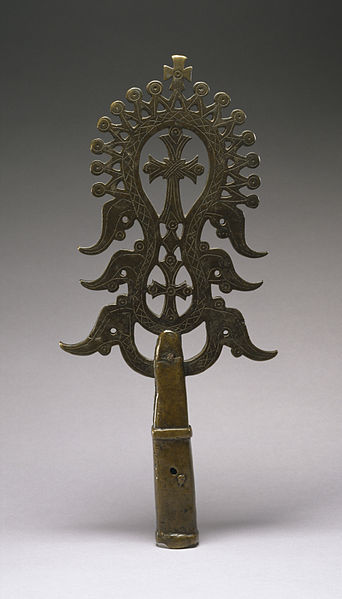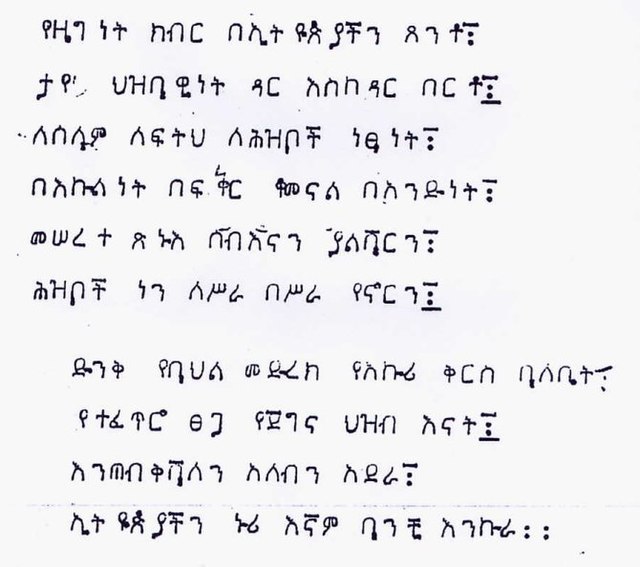The Zagwe dynasty was a medieval Agaw monarchy that ruled the northern parts of Ethiopia and Eritrea. The Agaw are a Cushitic ethnic group native to the northern highlands of Ethiopia and neighboring Eritrea. Centered at Roha, it ruled large parts of the territory from approximately 1137 to 1270 AD, when the last Zagwe King Za-Ilmaknun was killed in battle by the forces of the Amhara King Yekuno Amlak. The Zagwe are most famous for their king Gebre Meskel Lalibela, who is credited with having ordered the construction of the rock-hewn monolithic churches of Lalibela.
Church of Saint George, Lalibela constructed during the reign of King Gebre Mesqel Lalibela
12th century mural showing the baptism of Jesus Christ. Yemrahana Krestos Church, Lalibela.
Processional cross, Lasta. While undated it is, like similar shaped crosses, commonly associated with the Zagwe dynasty.
18th-century copy of land grant of King Tatadim (12th century) stored in the Ura Masqal church.
Amharic is an Ethiopian Semitic language, which is a subgrouping within the Semitic branch of the Afroasiatic languages. It is spoken as a first language by the Amharas, and also serves as a lingua franca for all other populations residing in major cities and towns in Ethiopia.
The Ethiopic (or Ge'ez) writing system is visible on the side of this Ethiopian Airlines Fokker 50: it reads "Ethiopia's": የኢትዮጵያ ye-ʾityop̣p̣ya.
A modern usage of Amharic: the label of a Coca-Cola bottle. The script reads ኮካ-ኮላ (koka-kola).
The Ethiopian anthem (since 1992) in Amharic, done on manual typewriter.







